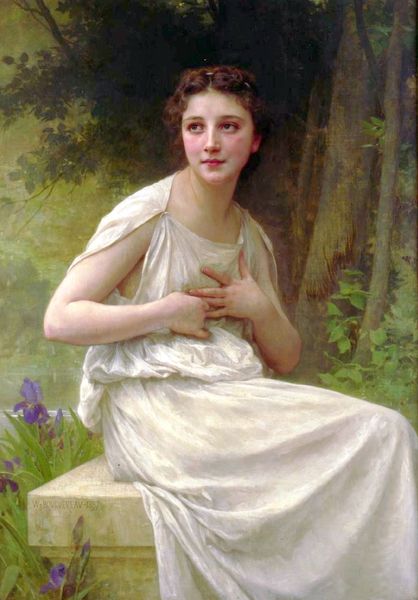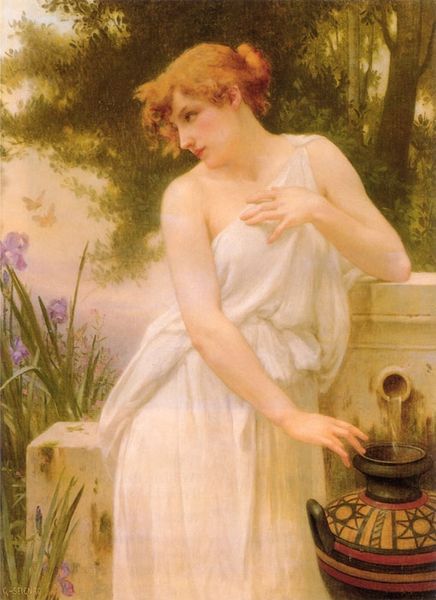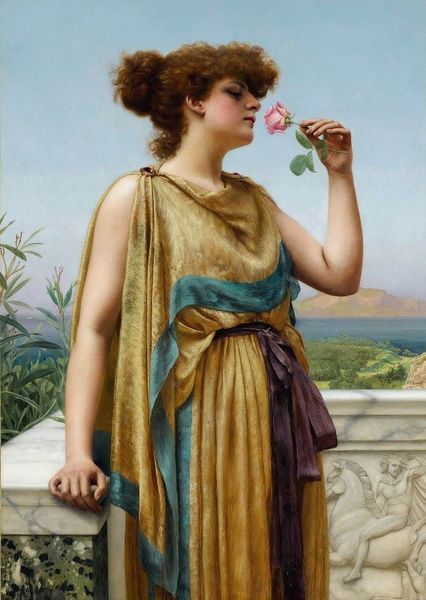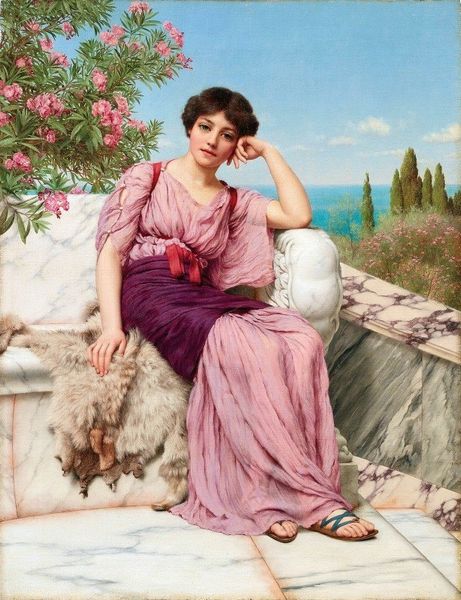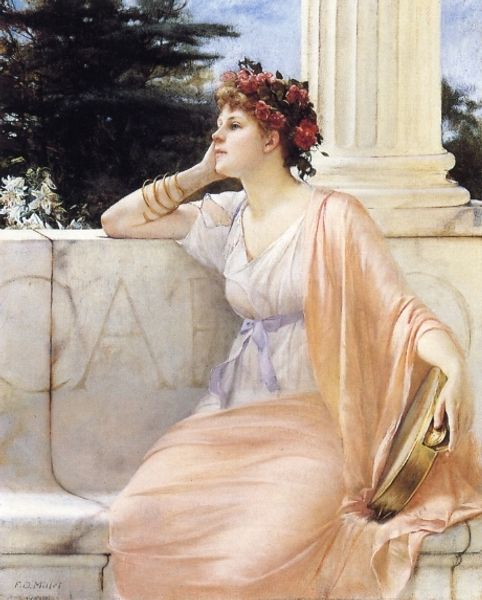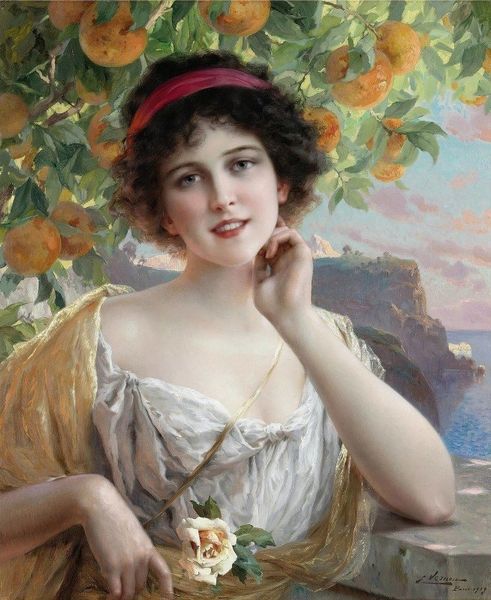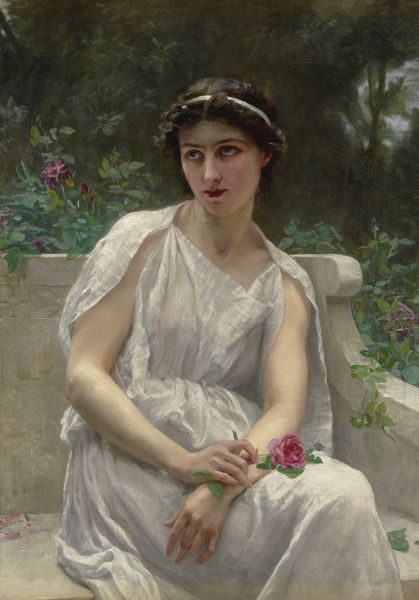
painting, oil-paint
#
portrait
#
allegory
#
painting
#
oil-paint
#
landscape
#
figuration
#
romanticism
#
history-painting
#
academic-art
Copyright: Public domain
Guillaume Seignac painted ‘La Muse’, sometime between the late 19th and early 20th century, using oil on canvas. The artwork offers a formal arrangement where the subject, dressed in a flowing white gown, is seated in a field of wheat. The soft brushstrokes and delicate color palette create a serene and idealized vision. Seignac employs classical motifs like the figure's Grecian attire and the wreath of red flowers and wheat. These elements reference antiquity and a sense of timeless beauty. Compositionally, the Muse is set against a backdrop of a hazy landscape. This placement invites contemplation on nature, beauty, and artistic inspiration. The interplay between the figure and the landscape may signify the muse's role. She embodies the synthesis of human creativity and the natural world. The figure's contemplative pose, with her fingers gently touching her face, suggests introspection and a moment of artistic thought. This is not merely a portrait, but a symbolic representation of creativity. It reflects the late 19th-century fascination with classical ideals and the romantic notion of artistic inspiration.
Comments
No comments
Be the first to comment and join the conversation on the ultimate creative platform.
